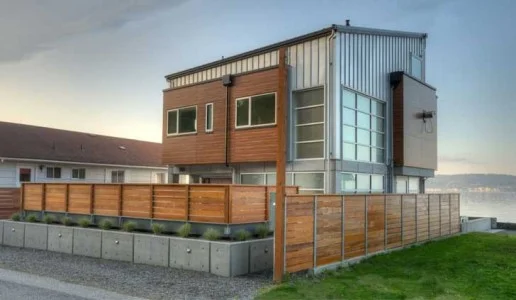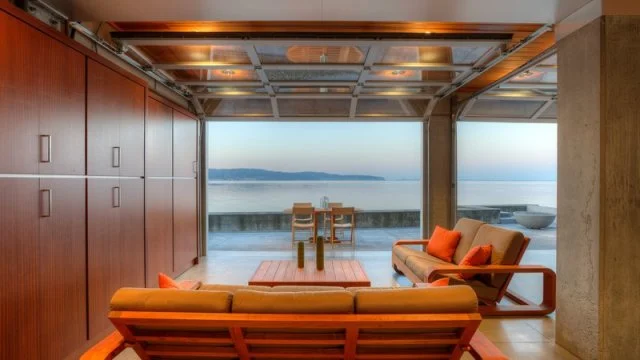>While its name might evoke scenes of Mother Nature at her most destructive, the cleverly designed Tsunami House on Camano Island, Wash. revolves around comfort, elegance and resilience.
The home’s not-so-secret weapon?
Located 9-feet below the home’s main living space is a multipurpose “flood room” with sliding, garage door-esque glass panels that are designed to break away when impacted by a sudden storm surge. During tsunami-like catastrophes, it’s a room that, in essence, takes one for the team. It’s also a room where everything, stylish furniture included, has been certified as waterproof.
>The White House and passed the long-awaited Farm Bill on Tuesday and announced on Wednesday that the administration aims to establish seven regional “climate hubs” to assist rural communities in the event of floods, droughts, fires, soil degradation, and pest damage.
The President hopes that creating these safeguards against climate change will garner political support for tackling larger issues, such as the EPA’s regulation of coal-fired power plants and promotion of renewables. The agency is currently writing laws that could potentially close hundreds of coal plants around the nation.
>Missing a Chance to Lead on Sustainability in Sochi: While CVS scores points at home for sacking cigarette sales, most Olympic sponsors are doing little to advance sustainability on a global stage.
>Artist Catherine Sarah Young designs imaginative solutions for a bleak future. For example, take the aqua tutu (shown above), designed to keep the wearer afloat in a flash flood. Deflated, it's a colorful skirt. Inflated, it could keep you alive, like an innertube.
The aqua tutu is included in Young's collection of Climate Change Couture, part of a larger endeavor called The Apocalypse Project. Based on climate trends, Young imagines a world where global warming has made life a lot more difficult. Each garment is pared with a written vignette that illustrates its potential use. She began the project during a 2013 Art Science Residency Programme in partnership with the ArtScience Museum at Marina Bay Sands, Tembusu College National University of Singapore and the Singapore-ETH Centre's Future Cities Laboratory.
None of the garments are intended for real production, but instead Young hopes the project will create more dialogue about climate change. For example, the Thermoreflector is designed to deflect heat away from the body in an ultra-hot urban environment of the future, with shield-like sleeves that protect the wearer's face.
>Can enormous heat deep in the earth be harnessed to provide energy for us on the surface? A promising report from a geothermal borehole project that accidentally struck magma – the same fiery, molten rock that spews from volcanoes – suggests it could.
>More than 100 semi trucks enter the back gate of the Oakland, Calif., wastewater treatment plant every day, carrying tons of unusual and often disgusting freight: tons of cheese whey, chicken blood and heads, used cooking oil. And yet wastewater director Bennett Horenstein enthusiastically welcomes it. It is, after all, free fuel.
Machines pulverize the cargo to the consistency of applesauce, then pipe it to 12 massive tanks called anaerobic digesters. Inside, bacteria devour it, along with solids from the plant's sewage, producing methane-rich biogas that is captured and burned to generate electricity – effectively making the facility a renewable power plant.





